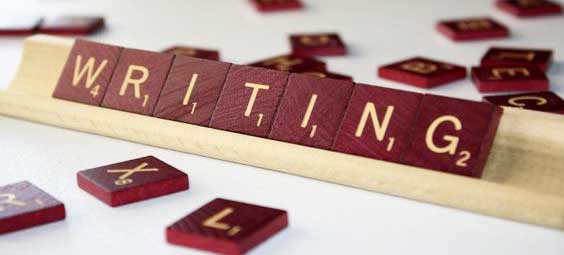Professional Editing Services
Structural & Stylistic Editing

“Your passion as a contributing writer made this work even better, and your skill in editing both content and style were irreplaceable. Because of your efforts, this book is, quite simply, much better than it would have been. I am forever grateful.”
~ David Mackesey, President, Diablo Country Club

The structural editor – organization of copy
Both types of editing are essential to accomplishing a successful edit. Structural editing, also known as substantive editing, generally involves moving chapters around and rewriting. Sometimes the writer is stuck and needs help to reorganize the book before continuing. Hopefully structural editing is completed before the writer has finished the manuscript.
Structural editing requires looking at the big picture. What is the author trying to get across in this book and can the objective be understood the way it is now? It is not unusual for a book to need some sort of reorganization so that it has a coherent structure that makes sense to the reader.
With best practices in mind, the structural editing process first looks at organization of the material then considers how to strategically position any visual elements. Length requirements may come into play, forcing cutting, revising or expanding of material. The budget and/or scheduling requirements of the publication may affect how visual elements like images, sidebars or headings are selected and treated within the piece of work.
Editing in the context of the publishing process
Most books are reviewed by multiple editors before they ever hit the shelves. Revisions with editors can seem endless to authors. Structural editors may find repetitious passages, characters that just don’t fit, and stories with no logical ending. It doesn’t always mean rewriting, but the changes can be significant enough that it feels like it. Be glad: the book will be better for it.
As part of the larger process, a professional editor is expected to be aware of the different editorial stages and of the role of the production team. Each part complements the work of the others to create the final publication. The project as a whole involves issues like timing, budget, and lines of authority.
An editor is also responsible for understanding legal and ethical requirements pertaining to publishing and may have to address issues that arise. These might include concepts of copyright, plagiarism, libel and related matters.
Stylistic editing adds clarity and flow
The stylistic editor
Stylistic editing examines the writing from the word, sentence and paragraph level, subtly upgrading the work. Most readers aren’t aware of the different editing specialties, and think of proofreading as editing. Proofreading is just one level of editing and often the last one to be done before publishing.
Looking at the work from the viewpoint of stylistic editing is to evaluate how effectively the concept comes across. More specifically, the task is to look at clarity, flow and overall language use. With clarity, does the reader have to stop and figure things out between the characters or in the plot? Editing for flow involves whether the sentences, paragraphs and chapters follow logically and if the pace continues at the same tempo. Language involves avoiding jargon and keeping the age group of the readers in mind.
Once the overall organization is deemed acceptable for the intended audience, it’s time to dig deeper, to look at improving word choice, eliminating ambiguities and clichés, so the meaning becomes clear. This sometimes involves rewriting sentences or paragraphs, to make sure the intent of the writer comes across as intended. A knowledge of grammar and sentence structure is essential.
Preserving the writer’s voice
The “style” of the work is a reflection of the writer. Of course it has to be accurate, but more than that, the parts have to add up to the whole. The stylistic editor looks closely at the intricacies of words, sentences and paragraphs. How can they be improved to better impart the meaning and intention of the writer? Word choices, deletions or additions, can make all the difference. Run-on sentences and wordiness will muddle the reader’s mind. Consistency in the length of paragraphs and transitions that make paragraphs flow smoothly from one to the other contribute to an easy pace and an easy read.
In addition to the understanding of the publishing process as expected of any professional editor, the stylistic editor is all about enhancing clarity and making sure that the meaning is clear. That requires making words and sentences more intelligible. Ultimately, the goal is to change only what is necessary and to preserve the writer’s voice as much as possible.

“After looking at the same words for so long, I needed someone with expertise I trusted to review my work for more than typographical errors. Cori did a great job in providing me with a content edit; it proved invaluable.”
~ Christine Bailey, Author

What it takes to be a good structural/stylistic editor
“Cori was one of my editors for “Confessions of a Golf Slut.” She contributed a mix of proofreading (noticing little mistakes), copy editing (improving sentences) and overall editing in terms of feedback on structure and transitions.”
~ Susan Fornoff, Writer, Editor, Publisher

Elements of the editorial process
Looking at a piece of work for the first time, a professional editor evaluates what type of editing work is needed, whether structural, stylistic, copy editing, proofreading—all of them, only one, or some combination.
The next step is to ask what the client can afford and to give a realistic cost estimate. Editors may charge by the page, by the hour, or by the project, so the estimate can vary. Budget considerations are best addressed right up front.
The writer may feel the story only needs proofreading. Some clients think that editing is just proofreading, so it may be necessary to explain the elements of good editing and all that it takes to produce a professional work.
A well-written and edited piece immediately positions you as a professional in your field. It can open many doors to you. You may be asked to speak on the subject, to serve as a panelist at a forum, or to consult on a project. Book sales will add to your income.
Defining boundaries
Editors have to be careful not to sign up for a “proofreading only” level of editing. A good editor even if engaged in only proofreading, cannot help but notice if the structure is disorganized, or the style does not flow. Some will go ahead and make corrections, as a kind of “bonus” for the writer. If the changes needed are substantial, expect the editor to bring it to your attention so a new arrangement can be worked out.
A literary work is like a chocolate chip cookie. You can pick out only the chocolate chips. But what a shame to deny yourself the perfection of the whole cookie, with all ingredients intact and in proper proportion to each other.
The writer has a lot to do with making it a successful editing experience. Bring the editor the best copy you can, in the most finished form you can produce. Have realistic expectations of what good editing takes, and be open-minded about suggested changes.
The product of all your time and effort deserves whatever it takes to be the best it can be. After all, the finished product represents you out in the world.
